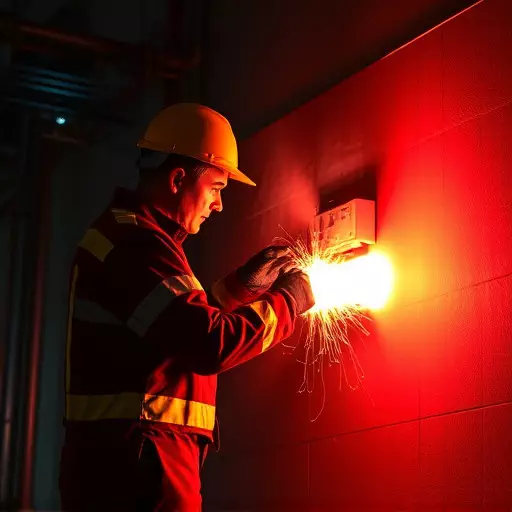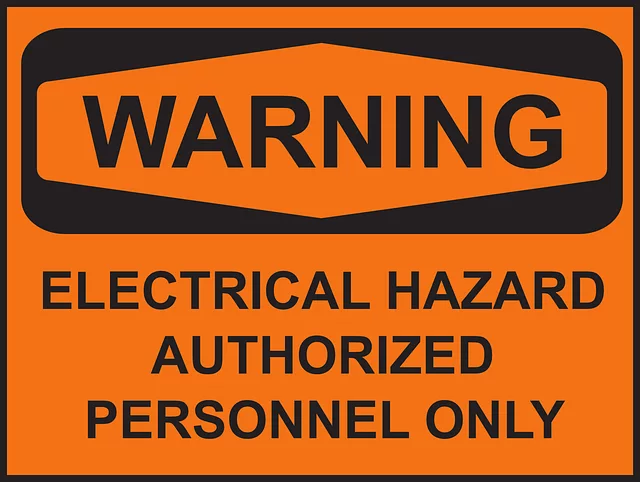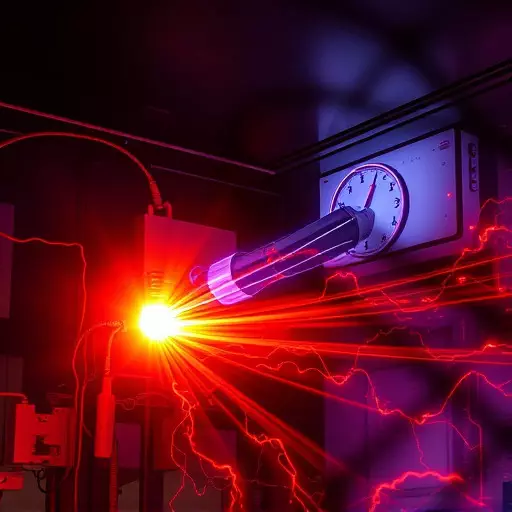Arc flash hazard analysis is a critical component of electrical safety compliance, which identifies and assesses risks associated with potential arc flash incidents within electrical systems. This analysis informs the implementation of protective measures to safeguard personnel and equipment from the explosive force, intense heat, and severe burns that can result from an arc flash. Circuit breakers are essential in this context, as they must be equipped with suitable settings and capabilities to quickly clear faults, thereby reducing exposure to arc flash occurrences and aiding in isolating compromised parts of the system post-incident. The ongoing integration of advanced protective equipment, regular maintenance, and adherence to standards like NFPA 70E are necessary for effective arc flash risk reduction strategies. These measures ensure compliance with electrical safety standards, which aim to protect against the potentially catastrophic effects of arc flashes, and promote a safe operational environment that minimizes the risk of equipment damage and injury to personnel. The proactive approach to arc flash safety involves conducting regular hazard analyses, updating systems with the latest safety technologies, and maintaining a robust defense mechanism against these hazards through advanced circuit breaker systems and continuous compliance monitoring.
When confronting the dangers of electrical systems, understanding the critical role of circuit breakers in preventing arc flash incidents is paramount. This article delves into the essential aspects of arc flash hazard analysis and outlines strategies for risk reduction through stringent electrical safety compliance. We will explore the intricate workings of circuit breaker systems that enhance protection against such explosive events, emphasizing their importance in maintaining safe operational environments. From the fundamental understanding of arc flash hazards to the advanced features of modern circuit breakers, readers will gain a comprehensive perspective on safeguarding electrical infrastructure and adhering to safety standards.
- Understanding Arc Flash Hazards: An Overview
- The Mechanism Behind Arc Flashes and Their Potential Impact
- Circuit Breakers as a Line of Defense Against Arc Flash Incidents
- Components of Circuit Breaker Systems Enhancing Arc Flash Protection
- The Role of Advanced Circuit Breakers in Arc Flash Hazard Analysis
- Strategies for Arc Flash Risk Reduction through Electrical Safety Compliance
- Implementing Circuit Breakers for Effective Arc Flash Mitigation and Safety Standards Adherence
Understanding Arc Flash Hazards: An Overview

Circuit breakers play a pivotal role in mitigating the risks associated with arc flash hazards. An arc flash incident occurs when a sudden and rapid electrical release of energy happens across an air gap within the electrical system. This can result in explosive blasts, intense heat, bright light, and severe burns to those near the event. To prevent such occurrences, it is imperative to conduct thorough arc flash hazard analysis as part of electrical safety compliance protocols. This analysis identifies potential hazards, assesses the risk levels, and outlines the necessary protective measures for personnel and equipment. By integrating arc flash risk reduction strategies, including the installation of circuit breakers with appropriate settings and capabilities, the likelihood of an arc flash event is significantly diminished. These devices can clear faults quickly, thereby reducing the duration of the arc flash. They also serve as a critical component in maintaining the integrity of the electrical system by isolating affected parts post-incident, thus ensuring ongoing safety compliance. Understanding the intricacies of arc flash phenomena and implementing robust mitigation strategies through circuit breakers is essential for safeguarding against the potentially catastrophic effects of an arc flash event. Electrical safety standards mandate that these measures be in place to protect both life and property, emphasizing the importance of a proactive approach to arc flash hazard analysis and risk reduction.
The Mechanism Behind Arc Flashes and Their Potential Impact

Circuit breakers play a pivotal role in safeguarding electrical systems against the catastrophic events known as arc flashes. An arc flash occurs when a fault in an electrical system causes a rapid, high-intensity electrical discharge through the air—across an air gap—between two conductors carrying electric current. This sudden release of energy can result in explosive damage to equipment and can pose severe burn hazards to personnel due to intense thermal radiation emitted in fractions of a second. The magnitude of an arc flash incident is influenced by factors such as the electrical parameters involved, the type of fault, and the configuration of the system. Consequently, understanding the mechanisms behind arc flashes is crucial for mitigating their potential impact.
To effectively manage arc flash hazards, a comprehensive arc flash hazard analysis should be conducted. This analysis identifies vulnerable points in the electrical infrastructure where an arc flash incident is most likely to occur. Subsequent risk reduction strategies can then be implemented through adherence to established electrical safety compliance standards, such as NFPA 70E (National Electrical Code). Circuit breakers are integral to these strategies; they are designed to detect abnormal conditions and interrupt the circuit quickly to prevent an arc flash from developing. By integrating modern protective devices and employing robust maintenance practices, the risk of an arc flash incident can be significantly reduced, thereby enhancing the overall safety and reliability of the electrical system. Regular assessments and upgrades to these systems ensure that they remain effective against the evolving challenges posed by arc flash hazards.
Circuit Breakers as a Line of Defense Against Arc Flash Incidents

Circuit breakers play a pivotal role in mitigating the risks associated with arc flash incidents within electrical systems. These incidents, characterized by the sudden release of energy from a low-resistance fault, can result in explosive blasts and intense thermal radiation, posing severe hazards to personnel and equipment. To address this, circuit breakers are engineered not only to disconnect the affected parts of an electrical circuit within a specified time but also to serve as a line of defense against such occurrences. The integration of arc flash hazard analysis into the design and operation of these devices ensures that they can withstand and interrupt fault currents effectively, thereby reducing the risk of an arc flash event. By adhering to stringent electrical safety compliance standards, circuit breakers are instrumental in maintaining a safe operational environment by limiting the magnitude of an arc flash and providing a critical response time to prevent catastrophic damage. The incorporation of advanced features like ground fault protection and instantaneous trip settings further enhances their capability to detect abnormal conditions and act swiftly, thereby significantly lowering the likelihood of an arc flash incident. Electrical professionals must conduct regular arc flash risk reduction assessments and ensure that circuit breakers are up-to-date with the latest safety technologies to maintain a robust defense mechanism against these hazardous events. This proactive approach to electrical system safety is essential for protecting personnel, minimizing downtime, and preserving the integrity of critical infrastructure.
Components of Circuit Breaker Systems Enhancing Arc Flash Protection

Circuit breaker systems play a pivotal role in safeguarding electrical installations from the dangers of arc flashes. These systems are equipped with components specifically designed to mitigate the risk of an arc flash incident. A fundamental component is the circuit breaker itself, which not only interrupts the circuit under fault conditions but also helps in limiting the energy release associated with an arc fault. Additionally, arc flash hazard analysis is a critical procedure that informs the design and installation of these systems. It involves identifying all potential electrical hazards, assessing the likelihood of arc flash occurrences, and determining appropriate protective measures to ensure electrical safety compliance.
To enhance arc flash protection, modern circuit breaker systems incorporate sensing devices such as differential relays and arc flash detection sensors. These devices rapidly detect abnormal conditions indicative of an arc flash and trigger the circuit breaker to open within fractions of a second. Furthermore, the integration of arc-resistant switchgear further fortifies these systems. This switchgear is constructed with materials and design considerations that provide increased protection against the effects of an arc flash. By integrating these components and conducting thorough hazard analyses, circuit breaker systems significantly contribute to reducing the arc flash risk reduction in electrical distribution environments, thereby promoting safer work conditions for personnel and minimizing potential damage to equipment.
The Role of Advanced Circuit Breakers in Arc Flash Hazard Analysis

Circuit breakers have evolved significantly over the years, with modern iterations playing a pivotal role in enhancing electrical safety compliance and mitigating arc flash hazard analysis. Advanced circuit breakers are designed with sophisticated sensors and algorithms that can detect abnormal conditions and respond within fractions of a second to interrupt current flow, thereby preventing the occurrence of an arc flash incident. These devices are integral to arc flash risk reduction as they not only trip faster than their predecessors but also communicate with other systems in the electrical infrastructure to isolate affected areas, reducing potential damage and injury.
Incorporating these advanced circuit breakers into an arc flash hazard analysis is a critical step for facilities aiming to adhere to stringent safety standards. They are equipped with features like differential current monitoring and fault current indication, which provide real-time information on the system’s status. This enables personnel to perform effective risk assessments and implement preventive measures accordingly. The integration of these devices contributes to a comprehensive approach to electrical safety compliance by ensuring that equipment is maintained within its rated specifications, thereby minimizing the likelihood of an arc flash event and safeguarding both personnel and infrastructure from harm.
Strategies for Arc Flash Risk Reduction through Electrical Safety Compliance

Circuit breakers play a pivotal role in mitigating the risks associated with arc flashes by incorporating strategies for arc flash risk reduction through adherence to electrical safety compliance standards. A critical component of this approach is conducting thorough arc flash hazard analysis, which identifies potential hazards and determines appropriate protective measures. This analysis enables organizations to understand the magnitude of the risks and the necessary precautions required to safeguard personnel and equipment. By implementing the findings from the arc flash hazard analysis, facilities can prioritize the installation of circuit breakers designed with advanced fault-detection capabilities and rapid tripping mechanisms. These features are essential for minimizing the impact of an arc flash incident by isolating the affected section swiftly, thereby preventing escalation and reducing the potential for severe injury or damage to the electrical system.
Electrical safety compliance is not a one-time endeavor but rather an ongoing commitment that involves regular reviews and updates to protocols and equipment in response to emerging technologies and industry best practices. Circuit breakers are at the forefront of this evolution, with continuous enhancements aimed at enhancing their performance during arc flash events. By staying abreast of the latest compliance requirements and technological advancements, organizations can ensure that their electrical systems are equipped to handle the evolving arc flash hazard landscape. This proactive stance on electrical safety compliance not only protects personnel from the dangers of arc flashes but also maintains the integrity of the electrical infrastructure, ultimately contributing to the overall safety and reliability of power distribution systems.
Implementing Circuit Breakers for Effective Arc Flash Mitigation and Safety Standards Adherence

Circuit breakers play a pivotal role in safeguarding electrical systems against the catastrophic effects of arc flashes. Implementing these devices is a proactive measure that complements the arc flash hazard analysis by providing a reliable and swift response to fault conditions. When an arc flash incident occurs, the circuit breaker functions to isolate the affected section of the electrical system, thereby preventing the escalation of damage and reducing the risk of injury to personnel. This immediate disconnection capability not only minimizes the potential for destruction but also aligns with the stringent safety standards mandated by regulatory bodies.
Adhering to electrical safety compliance is a non-negotiable aspect of modern electrical engineering practices. Circuit breakers, when correctly specified and maintained, ensure compliance with safety regulations such as NFPA 70 (National Electrical Code) and OSHA standards. By integrating advanced technologies like sensing capabilities and instantaneous trip functions, circuit breakers contribute to the arc flash risk reduction strategy. This integration allows for a more responsive system that can detect anomalies indicative of an impending arc flash and react accordingly to prevent incidents before they escalate into full-blown emergencies. Through this dual approach of rapid detection and isolation, circuit breakers are instrumental in maintaining the integrity and safety of electrical systems.


